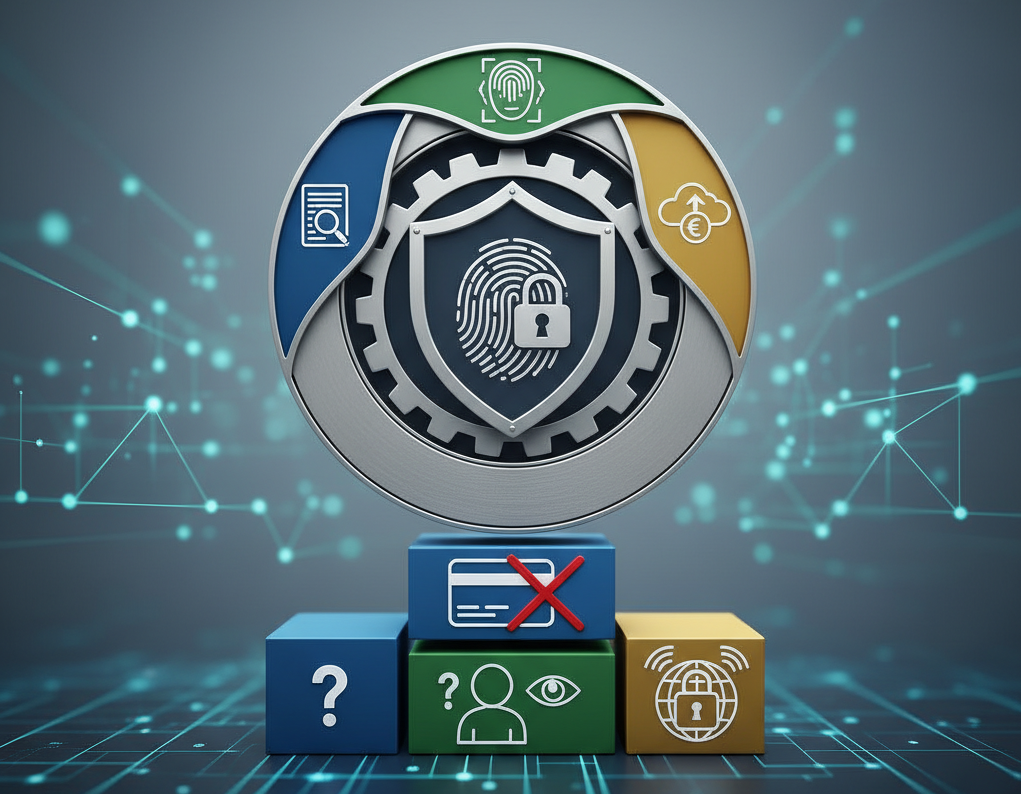In 2025, online loans are more popular among people. They love the speed, ease, and access of borrowing money online. But with this convenience comes a big risk: online loan scams. Scammers are smarter and faster today. They know how to trick people into giving personal details, paying fake fees, or signing up for loans that don’t exist. In this blog, we’ll show you the 5 biggest online loan scams in 2025, how to spot them, and tips for loan fraud prevention. We’ll also cover what to do if you are a victim of an identity theft loan and how to find safe online lending options.

What Are Online Loan Scams?
Online loan scams are fake loan offers made by criminals. These scammers pretend to be real lenders or companies. They use email, social media, websites, and even phone calls to trap people. Once you trust them, they try to:
- Steal your money
- Take your personal information
- Open loans in your name (identity theft)
These scams can destroy your credit. They steal your identity, and cause stress and debt. That’s why it is more important to learn about online loan scams 2025 and stay safe.
The 5 Most Common Online Loan Scams in 2025
Let’s look at the top five scams you should watch out for this year.
1. Advance Fee Loan Scam
How it works:
You see a loan ad that promises “guaranteed approval” or “no credit check.” You apply, and the lender says you’re approved. But before you get the money, they ask you to pay a fee for “insurance,” “processing,” or “paperwork.”
Once you pay the fee, they disappear. You never get the loan.
Red flags:
- You’re asked to pay a fee upfront
- The lender pressures you to act fast
- The website has no clear company address or phone number
Loan fraud prevention tip:
A real lender will never ask for upfront payment before giving a loan. If someone does, it’s likely a scam.
2. Fake Lending Websites
How it works:
Scammers create fake loan websites that look real. They copy logos and text from legit lenders. These sites may even show fake reviews.
You fill out the form and give your Social Security number, bank info, and ID. The scammer then uses this to create an identity theft loan or sell your data.
Red flags:
- Website has poor grammar or strange web address
- No secure connection (no lock symbol or “https”)
- No reviews on trusted platforms like Google or Trustpilot
Loan fraud prevention tip:
Always check if the lender is registered with your country’s financial authority. Use official websites, such as theloanspro.com, rather than ads or links from social media.
3. Loan Approval Without Application
How it works:
You get an email, text, or call saying you’ve been “pre-approved” for a loan, even though you never applied. You’re asked to share personal info to “claim” it.
This is just a trick to get your data or bank login. Once they have it, they may steal money or open loans in your name.
Red flags:
- You didn’t apply for any loan
- The message is full of urgent language like “Act now!”
- You’re asked to click a shady link
Loan fraud prevention tip:
Never trust offers that come out of nowhere. Real lenders don’t give loans to people who never applied.
4. Social Media Loan Offers
How it works:
Scammers now use Facebook, Instagram, TikTok, and other platforms to offer “quick cash” or “same-day loans.” They create fake profiles on social media and target people .
They ask you to send personal information. When you send information they ask you to pay a fee through PayPal, Zelle, or cryptocurrency. Once paid, they vanish.
Red flags:
- Loan offers from personal accounts, not company pages
- No official website or business info
- They ask for money on personal apps
Loan fraud prevention tip:
Avoid taking loans through social media chats. Always go to a lender’s official website to apply safely.
5. Phishing Emails and Texts
How it works:
You will get an email or text from what looks like a bank or lender. They ask you to click a link or download a form. These links lead to fake pages that steal your login information, or install malware in your computer system or mobile. After installing malware they receive your otp and other information easily.
Scammers can then access your bank or apply for loans in your name, a classic identity theft loan case.
Red flags:
- Email or text looks strange or has spelling errors
- You’re asked to click on unknown links
- The sender’s email address looks fake (e.g., loanhelp@gmail.com)
Loan fraud prevention tip:
Never click on links in random messages. Visit your bank or lender’s official site directly.
What Is an Identity Theft Loan?
An identity theft loan happens when someone uses your name and details to borrow money. You’re left with the debt and may not even know it until a collector calls.
Signs of identity theft loans:
- Loan accounts you didn’t open show up on your credit report
- You get bills or calls about unknown loans
- Your credit score drops suddenly
What to do:
- Report it to the lender right away
- File a police report
- Freeze your credit with major credit bureaus
- Dispute the loan with proof that it wasn’t you
Tips for Loan Fraud Prevention
Here are simple tips to stay safe from online loan scams in 2025:
- Never pay money upfront to get a loan, this could be a scam.
- Verify the lender’s license with your local financial authority, if they are not registered they are scammers.
- Use secure websites (check for “https” and a padlock icon), if https is not showing in url address, do not provide your personal information.
- Read reviews from real users
- Don’t share personal info with unknown sources
- Avoid social media deals offering loans
- Check your credit report regularly
These steps are easy but powerful. They can stop scammers before they steal from you.
How to Find Safe Online Lending Options
Online loans aren’t all bad. Lots of reputable companies provide quick, secure funding. Here-s how to spot safe web lending:
- Stick to names you know- Pick your own bank, a local credit union, or large platforms like LendingClub, SoFi, or Upstart.
- Seek transparency- Legit lenders post rates, terms, and contact details where you can see them.
- Check BBB grades, and look at what other customers have written.
- Use comparison tools- Trusted finance sites show verified lenders side by side.
Do your homework before applying. A few extra minutes can safeguard your wallet and your identity.
Conclusion
People who are strapped for cash make easy targets, so the crooks just keep circling. Learn how they work, and you’ll stop them cold. In 2025, the heavy hitters are advance-fee scams, spoof sites, phishing emails , and identity-theft loans. Yet by sticking to common-sense tips and picking trusted online lenders, you can guard your money.
Stay safe, stay smart, and don’t fall for an online loan scam in 2025.


